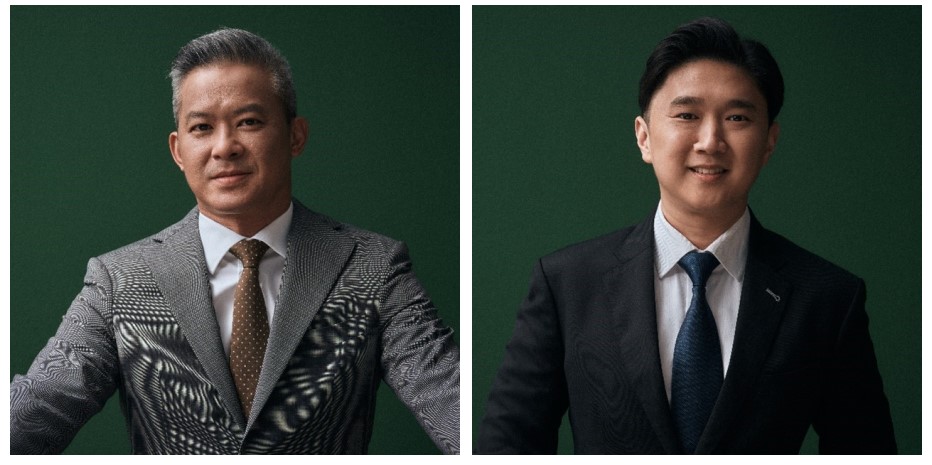
After spending 15 years or more at Singapore’s domestic legal giant Rajah & Tann, disputes specialists Danny Ong (L) and Wern-Jhien Yam decided to break away to blaze their own trail. The duo founded Setia Law, which prides itself as innovative and solutions-driven while boasting expertise in crypto disputes and restructuring. ALB finds out how they intend to make their own mark in Singapore’s intensely competitive legal market.
ALB: How is the evolving crypto regulatory landscape in Singapore shaping your strategy for disputes advisory in this space?
Danny Ong & Wern-Jhien Yam: Much of the work we’ve done in this space, particularly in the early “wild west” years of crypto’s growth, has been focused on private law disputes. Whilst the crypto regulatory landscape has always been a pertinent consideration, it largely operated in the periphery of our cases, informing the way parties and the Courts frame various crypto-related issues.
Moving forward, we expect that the maturation of the crypto market will see cases moving in the direction of the more traditional financial regulatory type of work. Regulatory and investigations matters in the crypto sphere loom large on the horizon, particularly given Singapore’s maturing regulatory regime coupled with its status as a crypto hub.
We consider our lawyers well placed to deliver effective counsel in this space given our extensive experience in both contentious financial services work and digital assets litigation.
ALB: How do you navigate and mitigate risks while injecting momentum into this nascent practice area of crypto-currency and digital assets litigation?
Ong & Yam: The cryptocurrency and digital assets space presents unique challenges for firms. From a KYC and AML risk perspective, it’s common to run into potential difficulties, particularly when you are faced with potential clients who have a long history in crypto, or who built their wealth or business in this area.
The traditional approach of paying close attention to source of wealth and source of funds remains highly relevant and prudent, but in threading the line between over and under-conservatism, it’s important to have a deeper understanding of how potential clients from the crypto sphere operate.
We’ve learned a lot about the industry from having operated in this space for a number of years ourselves, and we’ve come to recognise that “non-traditional” doesn’t necessarily mean “high risk.” In order to facilitate the work we do in this industry, we have to be alive to the realities of modern crypto clients whose funds might entirely exist in digital space, while maintaining the high standards of risk management that we set for ourselves.
After all, there may well come a time when issuing invoices denominated in bitcoin becomes common practice. We aren’t quite there yet, but maintaining a deep commercial understanding of the industry will go a long way towards adjusting to the seismic shifts that digital assets represent.
ALB: On the other hand, what are some trends and developments you are predicating in restructuring and insolvency and how is your firm planning to fit into the landscape?
Ong & Yam: The collapse of Silicon Valley Bank and the emergency rescue of Credit Suisse has further fuelled concerns of a looming global recession and financial crisis. As a financial and legal services hub, there is growing expectation that Singapore will see significant action as the country continues to cement itself as the jurisdiction of choice for resolving cross-border financial disputes and debt restructuring.
Due to its ever-progressive legal framework, Singapore’s attractiveness for restructuring and insolvency will demand specialist advisors, with the experience and track record to service a global clientele, and the ability to move quickly. Setia’s lawyers’ credentials in managing large-scale, cross-border financial crises, together with their multi-dimensional expertise, position Setia well to provide clients with the necessary support to manage corporate fallouts.
ALB: What kind of clientele are you targeting? Also, facing rising geopolitical tensions and macroeconomic turbulence, what are you doing to serve those clients looking for safe guards in Singapore effectively?
Ong & Yam: Singapore’s robust legal system and rule of law are critically important factors that draw investment and legal work to Singapore. They also make Singapore an easy sell to international clients, particularly in the areas of restructuring and insolvency, as well as crossborder commercial litigation. These are the areas where we see a growing desire in clients for localised legal knowledge and technical speciality applicable across multiple jurisdictions. These are the clientele that Setia hopes to capture, i.e., clients who recognise and wish to leverage on Setia’s capabilities in navigating complex cross-border disputes and corporate distress.


